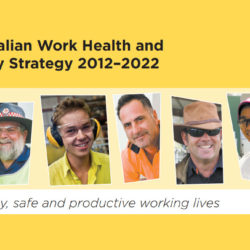In case you missed it, our first part in this series checked in on the Australian Work Health and Safety Strategy for the nation and all the progress the collective behind this plan is making.
In the Australian Work Health and Safety Strategy, the transport sector was identified as a national priority due to its high fatality rate. Between 2003 and 2015, there were 583 work-related fatalities in the road transport industry, with a whopping 92% of those happening to people in the freight transport business.
The road transport industry doesn’t just involve heavy haulage transportation businesses, however. It involves transporting freight by road and operating buses and taxis to transport passengers. It’s just of eight subdivisions of the transport, postal and warehousing industry.
Industry health snapshot
The good news: the road transport industry has grown steadily by 16% over the last 13 years, providing a wide range of career opportunities thanks to consumer demand for products that must be freighted. The not so good news is that it’s still a high-risk industry.
Every year there are around 5,100 workers compensation claims from workers in the road transport industry for work-related injuries and diseases resulting in more than one week off work. According to Safe Work Australia, this equates to 14 serious claims a day.
What do we suffer from the most? The data says sprains and strains are the most frequent injury and illness in road transport (46.4%), as well as severe joint or muscle conditions (16.2%).
Another alarming health issue those in the road transport industry are claiming is diseases of the circulatory system. Truck drivers are one of the top compensation claimers for stroke, coronary artery disease, hypertension and heart failure. They were only second to defence force members, fire fighters and police.
Largest risks for road transport workers
Every single one of these risks is up for improvement, whether though PBS-scheme policies through the NHVR or through WHS laws.
- Unrealistic time pressures: Uncontrollable factors such as peak-hour traffic and long warehouse load time isn’t being factored into delivery times. The strict deadlines within the industry ultimately force drivers to speed and skip necessary breaks
- Shift work, fatigue and physical fitness: The road transport industry operates on the shift work model, with many drivers working irregular hours. It’s well-documented that this type of work has adverse effects on health and safety, with fatigue, prolonged disease, mental and physical health suffering. Transport work only offers brief spurts of physical activity, meaning many workers are at a higher risk of being overweight due to inactivity.
- Inadequate vehicle design: Just like an office worker will ensure that their table, computer keyboard and chair are positioned for maximum comfort and posture, a transport driver needs to configure their seat and vehicle controls to avoid long-term musculoskeletal health. After all the cab is their work so it needs to not only provide all the necessary tools they need for their job but also do it in comfort. Driving in rough conditions for extended periods of time greatly increases the chances for spinal or skeletal problems down the road.
- Heavy lifting: Manual loading and unloading of weighty loads can injury without the proper care
- Working at heights: Drivers of trucks of all sizes will regularly climb into and on top of their vehicle, increasing the risk of injury due to falling. Too often fall protection is not in place to protect the worker
- Exposure to hazardous gases and fumes: Compared to other industries, those working in transport are more likely to be exposed to airborne hazards which can lead to respiratory issues.
How will the strategy help transport workers?
Transport, manufacturing and several other industries have been identified as a national priority. The Work Safe Work Australia has undertaken in recent years (and will continue to do so until 2022) aims to reduce the incidence of serious injury by 30% and work-place fatalities by 20% by 2022.
So far Safe Work Australia has released 20 new codes and guides, 10 reports and case studies and 13 videos, seminars and podcasts specifically for the transport industry, including the Guidance for Managing Risks of Diesel Exhaust, Model Code of Practice: Managing Risks of Plant in the Workplace and the NSW Road Freight Initiative. Check out the transport section on the Safe Work Australia website to view the work completed as part of the strategy.
The safety of Australian workers is more important than ever. Tune in for part three where we take a look at what the strategy is doing for the manufacturing sector.
